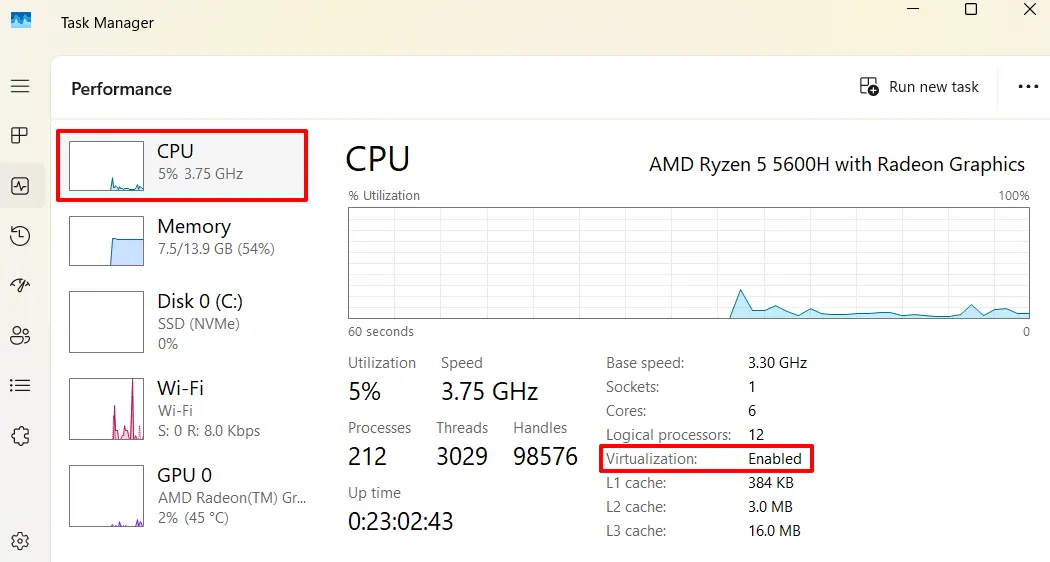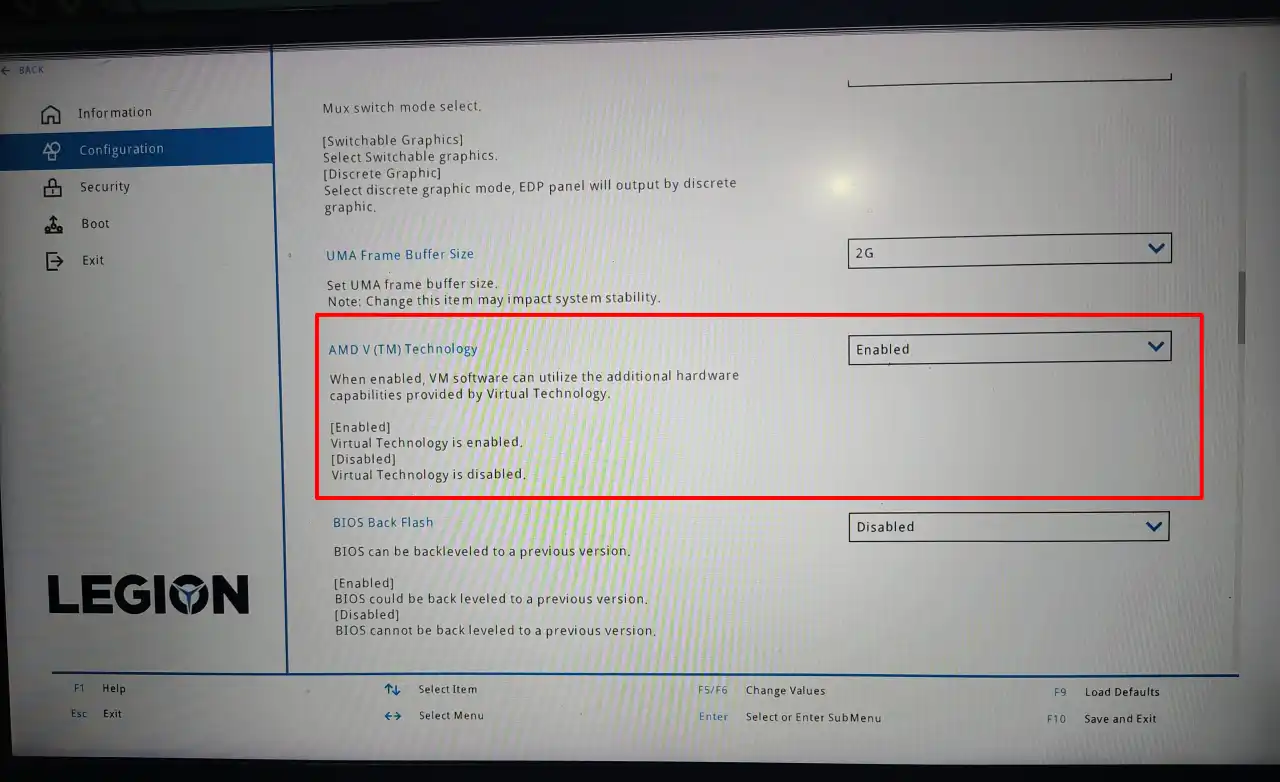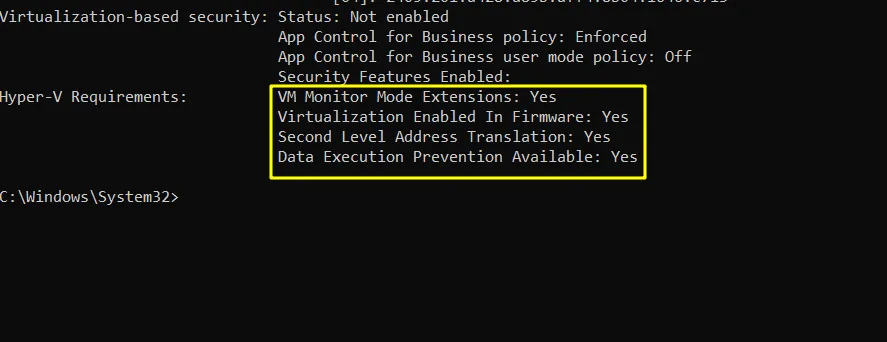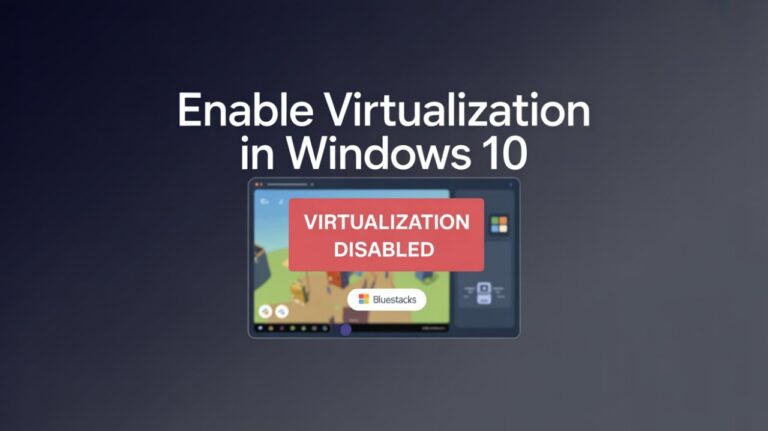- Many Android emulators and virtual machines require virtualization to be enabled, but it’s often off by default.
- To enable it, restart your PC, enter the BIOS, and turn on Intel VT-x or AMD-V under CPU or Advanced settings.
- Once enabled, emulators run smoothly, and you can use tools like VirtualBox, VMware, and Windows Sandbox.
Have you ever tried to run an Android emulator like BlueStacks, LDPlayer, or set up a virtual machine on Windows 10, only to get a message, “Virtualization is not enabled”? Or maybe you’re wondering why your computer is running slow when using VM software like VMware or VirtualBox?
If this sounds familiar to you, you’re not alone. I had the same problem while testing different emulators to compare game performance on my Windows 10 PC. After searching forums and trying out various solutions, I finally found a solution.
In this guide, I will show you the entire process of enabling virtualization in Windows 10 in the simplest way.
Also, Read How to Appear Offline on Steam (Even When You’re Online)
What is Virtualization in Windows 10?
Virtualization is a feature that allows your PC to create and run virtual machines (VMs). These VMs can be used to run different operating systems, emulators, or software that behave as if they were on a different computer.
Windows 10 supports virtualization using Intel VT-x (for Intel CPUs) or AMD-V (for AMD CPUs). Most modern PCs have this feature, but it is usually disabled by default in the BIOS settings.
How to Check if Virtualization is Enabled
Before analyzing the BIOS settings, let’s check if virtualization is already enabled on your system:
- Open Task Manager (Press Ctrl+Shift+Esc)
- Click on the Performance tab
- Select CPU from the left panel
- Look for Virtualization on the bottom right
If it shows Enabled, you’re all set. If it shows Disabled, follow the steps below to turn it on.

How to Enable Virtualization in Windows 10 Using BIOS
This is the most up-to-date and safest way to enable virtualization on most systems.
1. Restart your PC and enter BIOS/UEFI.
2. As your PC restarts, press the BIOS key (usually Delete, F2, Esc, or F10) repeatedly. (This varies by manufacturer: for example, I used F2 on my Lenovo laptop.) Check BIOS keys for your PC brand here.
3. Once you are in the BIOS or UEFI, use the arrow keys to navigate to the Advanced, CPU Configuration, or Security tab (may vary by brand).
4. Look for the Intel VT-x, Intel Virtualization Technology, or AMD V (TM) Technology (for AMD), then change the option from Disabled to Enabled.

Select Save and Exit Changes. Your computer will restart, and virtualization should now be enabled.
Comment
by u/kylmz7 from discussion
in pchelp
Check Virtualization Support using CMD
- Open Command Prompt as administrator (search for “cmd” > right-click > Run as administrator)
- Then, type the following command: systeminfo
- Scroll down and look for these lines:
- VM Monitor Mode Extension: Yes
- Virtualization Enabled in Firmware: Yes

If “No” is written under Virtualization Enabled in the firmware, then it is still disabled in the BIOS and needs to be enabled again from the BIOS settings.
Why Enable Virtualization in Windows 10?
Here are some of the obvious benefits:
- Run Android emulators (Bluestacks, Nox, LDPlayer) more smoothly
- Set up multiple operating systems with VirtualBox or VMware
- Use features like Windows Sandbox
- Improved performance for development/testing environments
Personally, I noticed a huge boost in LDPlayer performance after enabling virtualization. It used to slow down a lot while gaming, but now it runs as smoothly as butter.
What To Do If You Can’t Find Virtualization in BIOS?
On some older or entry-level laptops, this setting may be hidden. You can:
- Update your BIOS firmware from the manufacturer’s website
- Find your laptop model + Enable BIOS virtualization
- Contact support or check your motherboard manual
Conclusion
Enabling virtualization in Windows 10 may seem technical, but it’s actually quite a simple process once you know where to look. I’ve done it on several laptops, and the performance improvements are amazing after that.
If you’re into emulation, app development, or just want to experiment with other operating systems, enabling virtualization is a must.
FAQs
Yes, it is completely safe for everyday users. It will not harm your PC or reduce its lifespan. Just avoid enabling random BIOS settings if you don’t know what they do.
Yes, it’s completely safe to leave it enabled all the time.
No, it does not affect general performance. It only helps when using a virtual machine or emulator.

Recommended Articles
How to Hide Ads in Safari Using Distraction Control Feature in iOS 18
How To Download YouTube Videos Without Any Software In 2024
How To Fix Vencord Not Working – 3 Easy Fixes